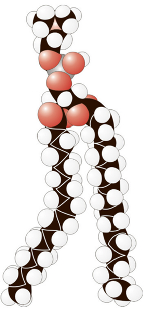EPJ ST Highlight - Taking a step back from the membrane debate
- Details
- Published on 10 December 2024

New progress in a long-standing debate about the nature of biological cell membranes could be made by considering which aspects of the membrane can be captured in simplified simulations
Even after 60 years of exhaustive experimentation and modelling, researchers still haven’t reached a consensus about the true nature of the deeply complex behaviours of biological cell membranes. Today, many disagreements remain over how the membrane’s molecular building blocks cooperate with each other to produce its overarching properties.
Through a new mini-review published in EPJ Special Topics (EPJ ST), John Ipsen at the University of Southern Denmark takes a step back from the debate: showing how complications to the discussion have emerged from the practices widely used to simulate the membrane. The insights presented in his paper could offer useful guidance for researchers, and may help to break a long-standing deadlock in their conflicting interpretations of the membrane’s properties.
The membranes of biological cells are made up of double-layers of tadpole-shaped molecules named ‘phospholipids’: whose ‘tails’ are closely aligned with those of their neighbouring molecules, and whose ‘heads’ point away from the phospholipids in the opposite layer. Within each layer, phospholipids can flow past each other, much like a 2D fluid. Embedded in these fluids are a diverse range of larger, more complex biomolecules.
Since the 1990s, researchers have steadily improved their understanding of the membrane’s structure, and the roles played by its molecular components in its overall function. However, their conclusions have often conflicted with each other.
Through his review, Ipsen points out how many useful insights have been gleaned through simulations of simple model membranes, based on the basic physical principles of mechanics and thermodynamics.
However, many disagreements have emerged since these models can’t realistically capture the basic physical aspects of the deeply cooperative behaviours of the membrane’s molecular building blocks.
By taking a step back from these complexities, Ipsen focuses on the conclusions which can be drawn from minimal descriptions of the membrane. His insights could be an important step forward in a debate which has now withstood for decades.
Ipsen, J.H. The troubles with the membrane domains. Eur. Phys. J. Spec. Top. (2024). https://doi.org/10.1140/epjs/s11734-024-01367-0




